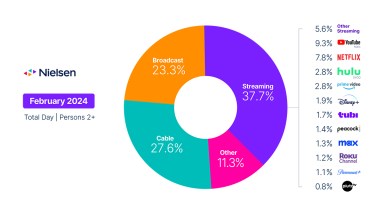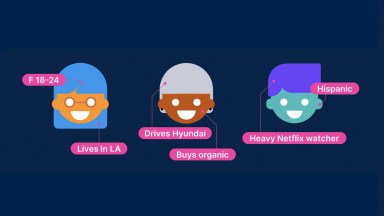For most of us around the world, gone are the days where “watching TV” means sitting in front of the screen in your living room, waiting for a favorite program to come on at a set time. Today, the growth of video-on-demand (VOD) programming options (via download or stream) gives consumers greater control over what they watch, when they watch and how they watch. And the number of self-reported VOD viewers is significant. In fact, nearly two-thirds of global respondents (65%) in a Nielsen online survey in 61 countries say they watch some form of VOD programming, which includes long-and short-form content.
But viewing habits aren’t the only things changing, and as such, viewers aren’t the only ones who stand to benefit from this new landscape. Traditional advertising models are changing as innovative technologies such as programmatic and addressable ads allow advertisers to reach consumers in new and creative ways. Many traditional TV providers, including networks and multichannel video-programming distributors (MVPDs), are reevaluating their business models in order to adapt better to consumers’ evolving habits. While it’s clear that business-as-usual methods won’t work in a landscape that is changing so rapidly, the field is wide open, as all players are looking to expand share.
“Today’s media landscape is complex, but the growth of video-on-demand programming services can create opportunities for all players in the media ecosystem,” said Megan Clarken, president, Nielsen Product Leadership. “For audiences, advertisers and content providers alike, advantage will be gained with an in-depth and keen understanding of not just how consumer viewing dynamics are changing, but why they are changing. Two things were never truer than they are today: Content will always be king, and consumers will continue to demand greater control and customization of the viewing experience. Providers who exceed standards on both fronts will have an advantage.”
The Nielsen Global Video-on-Demand Survey polled over 30,000 online respondents in 61 countries to gauge worldwide sentiment about VOD viewing and advertising methods. We examine who’s watching on-demand content, how they’re watching and why. We also explore how online-service providers are affecting the traditional TV landscape and offer insights about how to adapt as the ecosystem continues to evolve.
Are viewers replacing or supplementing selections?
VOD is popular around the world, but are viewers replacing one video service with another, or are they adding new services to their viewing repertoires?
Just over one-quarter of global online respondents (26%) say they pay to watch broadcast or VOD programming via subscription to an online-service provider such as Hulu, Netflix or Amazon, compared with 72% who say they pay to watch via a traditional TV connection. Considering this, it appears that more supplementing than shedding is taking place around the world. But responses vary widely from region to region.
North America and Asia-Pacific lead the way in terms of paying to watch, with 35% of respondents in North America and 32% in Asia-Pacific indicating they pay an online-service provider for programming content. Self-reported usage in Europe falls well below the global average, with a response rate of 11%, while just over one-fifth of online respondents in Latin America and the Middle East/Africa say they subscribe to an online-service provider (21% each).
Other findings from the global Video-on-Demand report include:
- VOD is becoming a part of daily viewing habits for many. Among those who watch any type of VOD programming, 43% say they watch at least once a day.
- More than half of global respondents (59%) say they don’t mind getting advertising if they can view free content.
- More than three-quarters of global respondents (77%) who watch VOD programming agree that they do so because they can view at a time that is convenient for them.
- Among those who watch VOD programming, Millennials and Gen X respondents are the most likely to agree that they like to catch up on multiple episodes at once.
For more detail and insight, download Nielsen’s global Video-on-Demand report. If you would like more detailed country-level data from this survey, it is available for sale in the Nielsen Store.
About the Nielsen Global Survey
The Nielsen Global Video-on-Demand Survey was conducted Aug. 10-Sep. 4, 2015, and polled more than 30,000 online consumers in 61 countries throughout Asia-Pacific, Europe, Latin America, the Middle East/Africa and North America. The sample includes Internet users who agreed to participate in this survey and has quotas based on age and sex for each country. It is weighted to be representative of Internet consumers by country. Because the sample is based on those who agreed to participate, no estimates of theoretical sampling error can be calculated. However, a probability sample of equivalent size would have a margin of error of ±0.6% at the global level. This Nielsen survey is based only on the behavior of respondents with online access. Internet penetration rates vary by country. Nielsen uses a minimum reporting standard of 60% Internet penetration or an online population of 10 million for survey inclusion.



